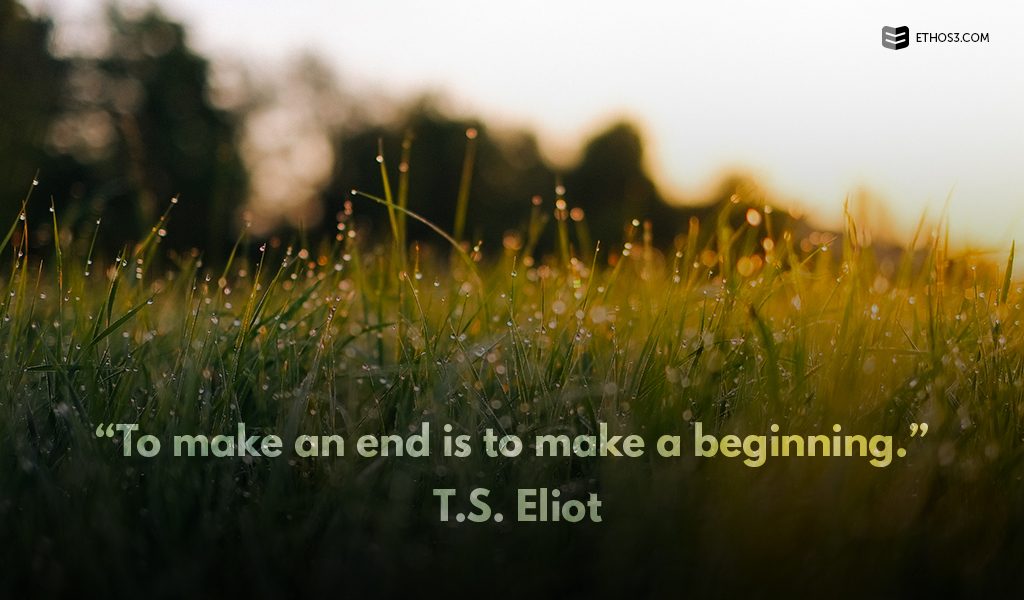No matter how long your presentation is, no matter how complex the content or purpose, you can craft a compelling conclusion in 3-5 slides. The content tactic we’re about to explain was developed after hundreds of presentations written for clients, built around one single philosophy: get to the point and make sure your audience knows what to do next.
If you’re struggling to wrap up your content, create 5 new blank slides at the end of your current deck. Now, fill them in with the following:
Slides 1-2: Repeat Key Messages
Create a slide that summarizes the key points you want your audience to remember. At Ethos3, we recommend reducing this number to three or less in order to help boost memorability. And if you only have one key point to remember? Even better. This should only take up one slide unless you want to give each key message its own slide for the sake of design.
Before the summary, you may choose to have a conversational transition slide that says something like “Let’s Review,” or “The Big Picture.” While this is optional, it can add more defined separation between the body of your content and the conclusion.
Slides 2-3: Lead to Your Call to Action
The slides that lead to your call to action need to be like little breadcrumbs, leading the audience along to the final reward. Remind them of why your message is so important, and touch on the opening narrative or problem. For example, if you are pitching an idea that could save the environment from global warming, your slides could be:
Slide 2: “For the future of the globe…”
Slide 3: “For the future of our families…”
As you can see from the example, these don’t need to be complex or remind the audience about specific details. They just need to be high-level, powerful, and emotionally compelling.
Slides 4-5: The Call to Action
The final slides need to clearly and simply state what the members of your audience should do with the information they’ve just seen. Should they invest millions of dollars? Join an email list for updates? Call their mom and tell them about the presentation? The call to action could be as simple as saying “Join Us,” or as complex as saying “Help us raise $2.5M with your investment of $1K.”
The call to action should really only take a single slide, leaving a final slide for contact information, a placeholder that says “Any Questions?” or simply your company logo. Your very last slide should be simple, as it may be left up on screen for a long period of time while you host a discussion or people exit the talk.

A strong conclusion needs to pull the audience away from the granular look at your key points and subpoints and bring them back into the emotional cause of the presentation itself. As long as you repeat your key points and leave them with a call to action, you don’t have to worry about writing a complicated or lengthy end. Think of it like a roller coaster gradually stopping after a long and twisty ride. All it needs to do is stop as quickly and smoothly as it can.
Want to read more articles about improving your presentation’s content? Check out these gems from our archive!
Inside Ethos3: Using Content Pitches to Develop a Strong Storyboard
